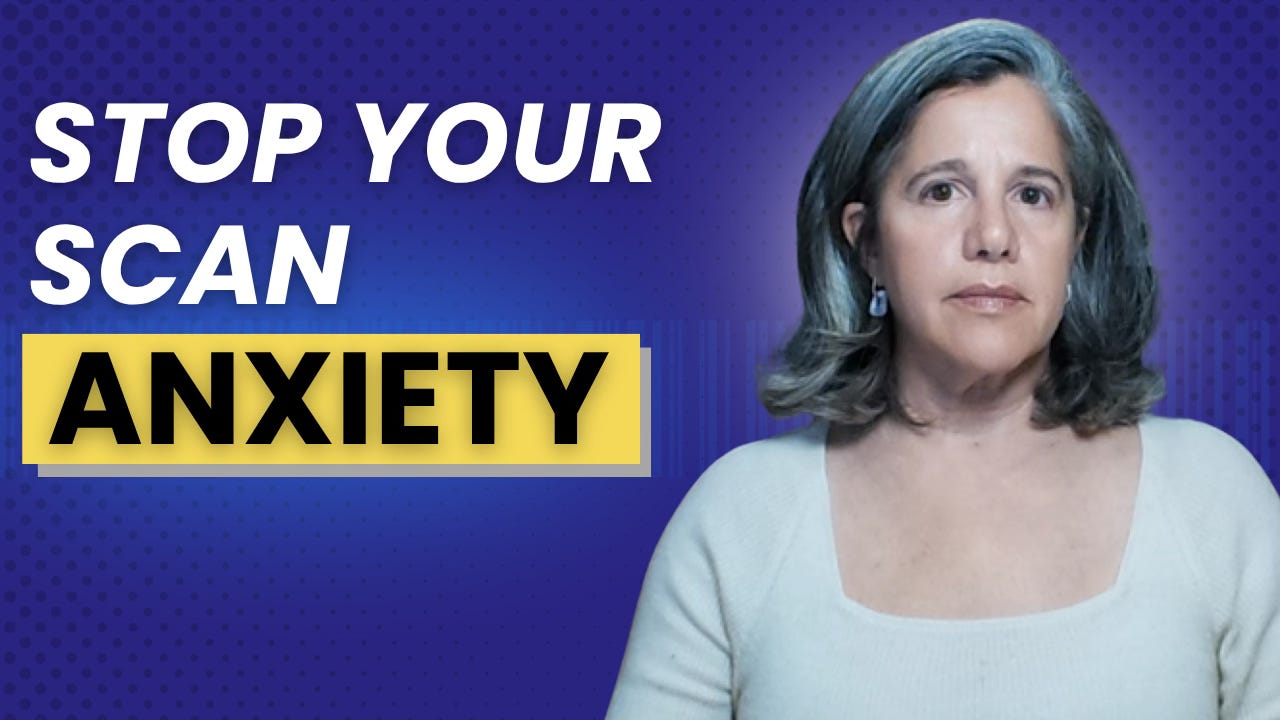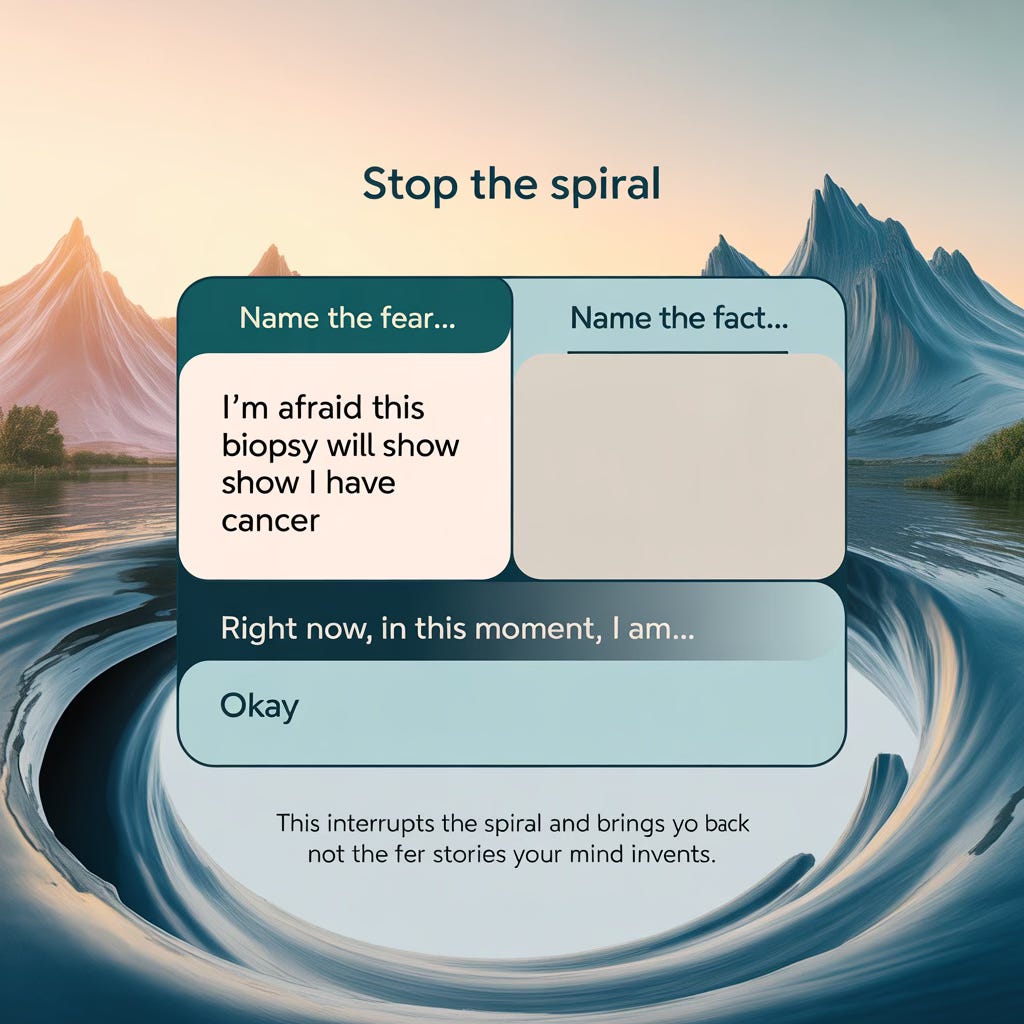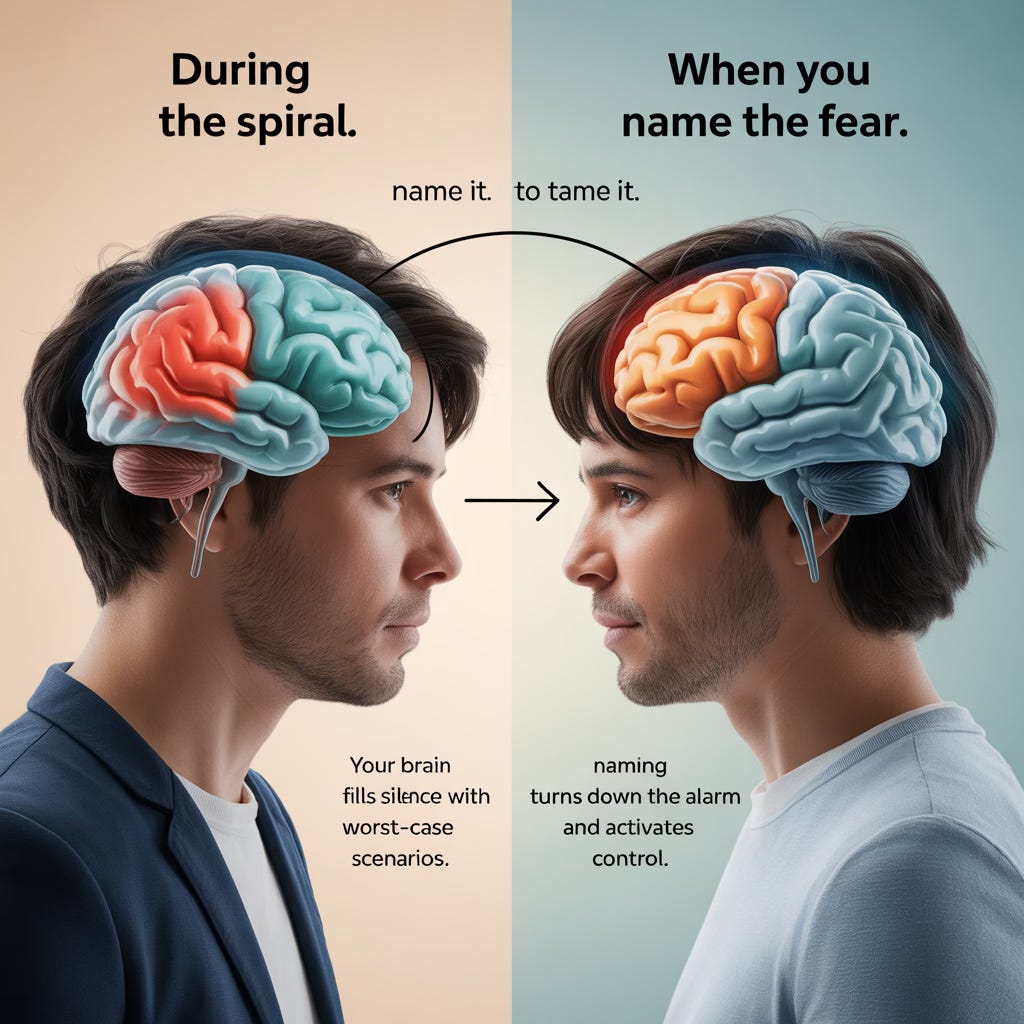Stop the Spiral: The Science Behind Taking Back Control During the Wait
Managing Scanxiety
If you’ve ever waited for scan results and felt like your whole nervous system was vibrating, you’re not alone—and you’re not overreacting. Research shows that over 55% of cancer patients experience clinically significant scanxiety, with severity peaking during that brutal stretch between the scan and the phone call. In some studies, that number climbs above 70%.
So on January 3rd, 2023—walking into what should have been a routine imaging appointment, only to be told I needed an MRI, then a biopsy, then possibly to delay her surgery—I describe something most people facing cancer know intimately.
Here’s where it gets interesting: these tools aren’t wishful thinking. They’re backed by decades of neuroscience research. Let’s break down what actually works.
Your Brain Would Rather Have Bad News Than No News
When the radiologist paused too long. When the tech stepped out. When the same-day phone call came. my brain did exactly what yours does:
“When I hung up the phone, the what-ifs took over. What if this is the day cancer comes for me? What if everything I’ve done for the last 20 years suddenly doesn’t matter? What if it’s further advanced? What if it’s not early? What if it doesn’t respond to treatment? What if, what if, what if? And if you’ve been in that space, you know—it feels like your whole nervous system is vibrating.”
That vibration isn’t a character flaw. It’s your amygdala—the brain’s alarm center—doing its job. Your brain hates uncertainty more than bad news. It would rather prepare you for every possible catastrophe than leave you unprepared. The problem is, this survival mechanism doesn’t feel like protection. It feels like drowning.
So how do you interrupt it?
Why Willpower Doesn’t Work (But Structure Does)
You’ve probably tried to think your way out of the spiral. Tried to stay positive. Tried to distract yourself. And you’ve probably noticed that white-knuckling your way through doesn’t actually work.
I names this directly:
“Willpower is no match for scanxiety, but structure is. This is where you need some rituals. Rituals that ground you. It could be a walk, a playlist, or a warm shower. Brain-off Netflix show—anything that slows your heart rate and anchors you into the current moment.”
This isn’t about tricking yourself into feeling better. It’s about giving your nervous system something concrete to do while you wait. The ritual isn’t the point—the grounding is. When you’re anchored in the present moment, you’re dealing with actual data: what’s happening right now, in your body, in this room. Not the fear stories your mind invents about a future that hasn’t happened yet.
A holding pattern plan means you decide before the scan what you’ll do during the wait. You don’t leave it to chance. You don’t hope you’ll feel okay. You build a structure that holds you when willpower can’t.
Name the Fear, Name the Fact
Here’s where the science gets particularly compelling. A landmark 2007 study from UCLA found that simply putting feelings into words—what researchers call “affect labeling”—actually changes what happens in your brain. When participants labeled negative emotions while viewing disturbing images, their amygdala activity decreased while their prefrontal cortex (the part of your brain responsible for reasoning and control) lit up.
In other words, naming the emotion turns down the alarm.
This isn’t about positive thinking. It’s about interrupting the spiral with specificity.
My formula:
“Anytime your mind starts spiraling, name it. Name the fear and name the fact. I’m afraid this biopsy will show I have cancer. The fact is, seven out of ten breast biopsies come back benign. I’m scared something is growing inside of me, but right now, in this moment, I’m okay.”
That one-two punch does something your brain can’t do on its own: it brings oxygen into the room. It gives you back a sense of control—not after the results, but during the waiting. The fear doesn’t disappear. But it stops running the show.
Research on spider phobias found that affect labeling actually outperformed traditional cognitive reappraisal (the “think differently about it” approach) in reducing physiological fear responses. Naming your fear isn’t a warm-up for the real work. It is the work.
Borrow Certainty From Your Future Self
The hardest part of waiting is that you feel like you can’t be okay until you know. But that’s not actually true. You’ve already survived every single moment you thought you might not. That’s data, too.
This is what I mean about borrowing certainty:
“When your brain screams, I don’t want this. I can’t handle this. Not now, why me? You can gently answer back—yes, I can handle this. It’s never a good time. I’m ready. You’ve already survived every single moment you thought you might not, and this waiting period is no different.”
This isn’t toxic positivity. It’s evidence-based confidence. You’re not pretending everything will be fine. You’re reminding yourself that you’ve handled hard things before. You found your footing after the last terrifying moment, and you’ll find it again—whatever the result.
The Pre-Plan: Decide Before the Scan
The single most actionable thing you can do? Make your waiting plan before you need it.
What will you do between the scan and the results? Who will you call? What will you watch? Where will you walk? What will ground you and make you smile?
When you fill the waiting with something that anchors you in the present moment, it passes more quickly. Not because you’ve tricked yourself, but because you’ve given your brain something real to do instead of inventing catastrophes.
And whatever the answer is—whatever that phone call brings—you’ll take the next step then. Not now. Then.

The Bigger Truth
Scanxiety isn’t a sign that you’re handling cancer wrong. It’s a sign that you’re human. Your brain is trying to protect you, the only way it knows how.
But you don’t have to let it run the show. Structure beats willpower. Naming beats ruminating. And you—right now, in this moment—are okay.
You don’t need certainty to be okay today. You just need a plan for the waiting.



